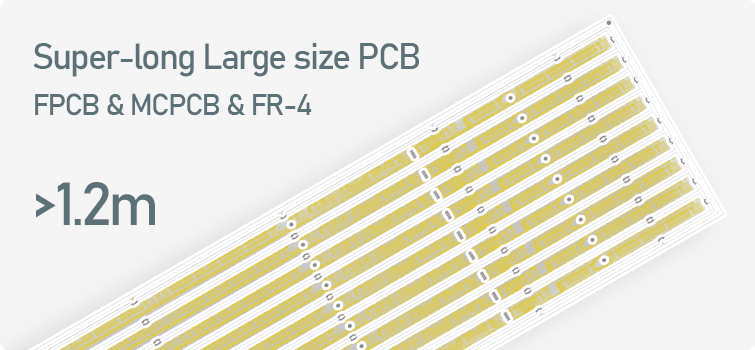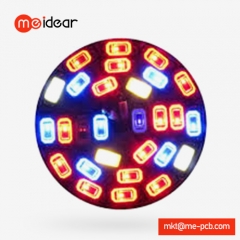Aluminium-based PCB
Meidear PCB for Plant Growing Lamps Manufacturer In China
Item No.: A00125
Our printed Aluminum PCBs are widely used for LED lighting, power equipment and automotive systems.
Flower Plant Grow Light PCB Assembly SMD 5730 Full Spectrum High Performance
Flower Plant Grow Light PCB Assembly SMD 5730 Full Spectrum High Performance
Description
Grow Lights for Indoor Plants and Indoor Gardening
Indoor growing offers many advantages. The biggest benefits are the most obvious: garden pests can’t get at your plants, and you have total control over the weather.
Yet unless you’re lucky enough to have a solarium or greenhouse attached to your home, providing sufficient light to your plants will likely be an obstacle (shade-tolerant houseplants excepted). South-facing windows may provide enough light for a tray or two of seedlings, but if you want to grow vegetables, or any other sun-loving plants, to maturity, you’re going to need grow lights.
The indoor lighting found in most homes does little to support photosynthesis. Traditional incandescent bulbs do not have the proper spectrum of light, or intensity, to supplant the sun. Household fluorescent bulbs can make effective grow lights, but only if they are placed in within a few inches of the foliage and left on for 16 hours per day – not ideal.



Flower Plant Grow Light PCB Assembly SMD 5730 Full Spectrum High Performance
Our printed Aluminum PCBs are widely used for LED lighting, power equipment and automotive systems.
| Excellent thermal conductively |
| Excellent dimensional stability |
| Excellent machining performance |
| Excellent Shielding of electromagnetic waves |
| Excellent cost performance |
Types of Grow Lights
There are three main types of grow lights.
Full-spectrum fluorescent lights – either of the tube or standard CFL variety –
are a great choice when starting seeds indoors. PHOTO: By Meidear / meidearpcb.com
are a great choice when starting seeds indoors. PHOTO: By Meidear / meidearpcb.com
Fluorescent Grow Lights - Aluminum Base board
The standard fluorescent bulb, commonly denoted T12, makes a decent grow light for houseplants, starting seeds, supplementing the natural light of a window, and other situations where lighting needs are modest. They are fairly weak in light intensity, however, and must be placed within a few inches of the foliage to have much of an effect.
which are narrower in diameter than T12s (but still widely available wherever lightbulbs are sold), have a much higher light intensity, making them suitable as a sole light source for sun-loving plants. Compact fluorescent bulbs (CFLs) are an option for small spaces, or if you don’t like the look of long rectangular fluorescent light fixtures – CFLs will screw into an ordinary incandescent light fixture.
Look for specializ-ed full-spectrum fluorescent grow bulbs (like this , or , which fits into a standard socket) to provide the right balance of light for flowering plants.
Meidear PCB specializ-ed in full-spectrum fluorescent grow bulbs PCB which used as Aluminum PCB.
OEM aluminum led pcb manufacturer can supply this grow bulbs PCB for you.


SMT – Assemble Services
PHOTO: By Meidear / meidearpcb.com
LED Grow Lights - aluminum led pcb
While they are considerably more expensive than fluorescent bulbs, LEDs use half the electricity and last five times longer, more than paying for themselves in the long run. The average LED bulb from the hardware store is not designed for plant growth, however – you need special , a relatively new technology that is increasingly available from horticultural suppliers.
LED grow bulbs are capable of much greater light intensity than fluorescent bulbs and are available in full-spectrum form. An easy rule of thumb: Fluorescent bulbs are often used when growing just a handful of plants; LEDs are preferable for larger quantities since you can achieve higher light intensity per square foot. Another advantage of LEDs? They produce very little heat compared to other bulbs – an issue that can become problematic when you have a lot of lights in a small space.
If you are looking for a factory to make aluminum substrates, Meidear PCB will be your best choice.


Customized PCB Fabiracation Services
PHOTO: By Meidear / meidearpcb.com
HID Grow Lights - Al-based pcb
Before the advent of LED grow lights, were the main option for large indoor plantings. They are extremely powerful, but are expensive to purchase, consume electricity inefficiently, require special light fixtures, and give off a lot of heat. All that said, they are very effective and are still widely used. If you want to grow large plants like tomatoes or lemon bushes, HIDs are good bet because the light penetrates farther into the foliage than with other bulbs.
There are two types of HID bulbs. High-pressure sodium (HPS) bulbs are best for flowering (low spectrum), while MH (metal halide) bulbs are required to support vegetative growth (high spectrum); the two types are often used in conjunction. Unfortunately, each type requires its own fixture.










